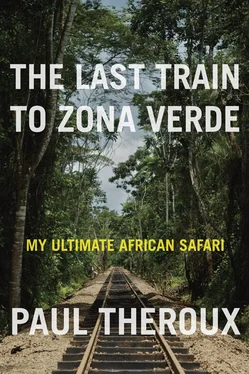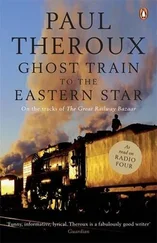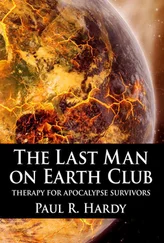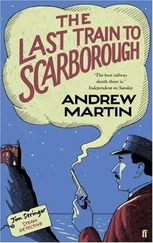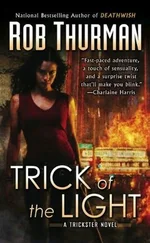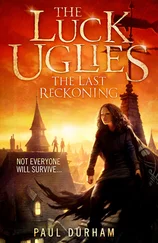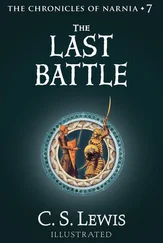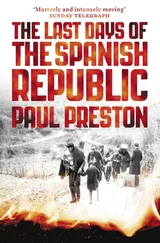16. “This Is What the World Will Look Like When It Ends”
THE INTENSITY OF A TRIP — bad food, hard travel, slow buses, hot weather, jeering locals — can induce a mood of isolation, provoking episodes of alienation that resemble out-of-body experiences. I think: Am I imagining this? And I have no answer, because no one hears the question. But then I found someone to ask.
Dazed with Luanda and dispirited by my trip, I was fortunate around this time to have met the clear-sighted Angolan Kalunga Lima, who had told me many things I needed to know — and most of all that my sense of Angola, and Luanda in particular, was not the consequence of travel fatigue. I was first introduced to Kalunga at a photographic exhibition one evening in Luanda. He assured me that I was not overdramatizing the situation. He was impressive, intelligent, and straight-talking, and his gift for satire was a relief to me.
I said, “A man in Namibia told me, ‘Angola’s a nightmare!’ ”
Kalunga said, “Namibians have a gift for understatement.”
Perhaps a clue to his speaking his mind was his unusual history. The son of a politically passionate Angolan father and an adoring Portuguese mother, he had been born in Algeria, where his father, a committed revolutionary, was a soldier in exile. Kalunga had been educated in Canada and the United States, and later, on a whim, he taught on the Caribbean island of St. Lucia. He had traveled widely in Africa and Europe, was well read, responsive, funny, and hip. Seeing a Hummer stalled in traffic on a Luanda street, the African driver wearing thick gold chains around his neck, Kalunga said, “He got bling!” He was a maker of documentary films, and his latest project was chronicling the discovery of the “Angola Titan,” a dinosaur whose fossil remains had been discovered in the southern desert near Namibe. He had also made a documentary about Angola’s elusive and little-known giant sable antelope ( palanca negra gigante ), apparently its last living wild game.
I instantly took to Kalunga, for his warmth, his candor, his enthusiasm, and soon after we met, we made plans to travel in the Angolan bush, a safari on which he would be the photographer and I the writer. He wanted to show me the habitat of the endangered antelope.
“We’ll collaborate! It’ll be a major magazine piece!”
A major magazine piece was less of an incentive for me than delving deeper into rural areas. What convinced me that we’d be a good team was that we seemed to share certain crucial ideas, as aid skeptics and as disbelievers in the current political process, with a curiosity about traditional tribal culture and a general feeling that any salvation, or simple hope, in Angola was likely to be found not in Luanda but in the landscapes of the distant countryside.
The sable antelope was an animal unique to Angola, and because of that was an icon in the country — the symbol of the national airline, the name of Angola’s national football team. It had the longest horns of any antelope in the world, and existed nowhere else in the world except a place called Cangandala.
“I thought there were no wild animals left in Angola,” I said.
“Just this one, and it’s doomed,” Kalunga said. “You have to see it soon, before it becomes extinct.”
“Where is Cangandala?”
“East of here. Near Malanje.”
“That’s where I want to go. On the train.”
“ Zona verde,” he said.
“I love that expression. I heard a guy use it when we got stuck on the way to Lubango. The green zone.”
“The bush.”
“Why is it I always feel hopeful in the bush?”
Thoreau had written in his essay “Walking”: “I believe in the forest, and in the meadow, and in the night in which the corn grows.” I too believed in those verities.
“Because they haven’t made a mess of it,” he said. And being Kalunga, and gray-eyed, he smiled and added, “Yet.”
It was true, he said, that Luanda was a city of idle millions. Three quarters of the country’s population was under the age of twenty-five, and very few had jobs. A quarter of Angolans lived in Luanda. Unemployment he estimated at about 90 percent. But these were wild guesses, since statistics were nonexistent. No one knew the size of the population. The last general census had been taken almost forty years ago, in 1974.
“The people from the countryside flock to Luanda — and what for?” he said. “There’s no work. It’s just one slum after another. They don’t go to school, they don’t have jobs. They have no idea of the war that ended just nine years ago.”
It so happened that I was in Luanda on Angola’s Independence Day. It was a national holiday, but for an unemployed and cynical populace, whom the government regarded as “the mutable and rank-scented many,” this was meaningless. There was no celebration, no music, no flags flying; there were no parades. It was just a day off, an empty day.
Kalunga mentioned a great battle, the siege in 1994 of Cuito Cuanavale in the south, a town held by Angolan and Cuban soldiers that was attacked by armored columns of the South African army. In forty days of shelling, Soviet tanks against Mirage fighter planes, the result was the deaths of more than fifty thousand people and defeat on both sides, the whole bloody business fought to a stalemate. I had heard it called “Angola’s Gettysburg” and “Angola’s Stalingrad.”
“It was the biggest conventional battle fought anywhere on earth since World War Two,” Kalunga said, “and these Angolan kids you see have no idea that it happened. There are land mines in Caxito” — sixty miles north of Luanda — “that are still blowing up farmers, but no one seems to care. People just sit around. Other people clean them up — foreign agencies.”
“But if there’s work for the Chinese, why isn’t there work for Angolans?” I asked. The day before, I had spoken with a man in the know who said that an accurate figure for the number of Chinese expatriates, businessmen, and settlers in Angola was about seventy thousand, and slowly growing.
“The Chinese are a separate workforce,” Kalunga said. “They keep to themselves. We first began to see them in 2006. They were living on ships anchored in Luanda harbor. You know why?”
“I was told they were criminals, working off their sentences.”
“Right. Slave labor. They worked on the buildings that are now starting to fall apart — there are cracks all over the Chinese buildings. They’re still here. The first generation of Chinese-Angolan babies is starting to appear. You see them in the shantytowns of Luanda, these little half-Asian mestiços.”
Some of these Chinese former prisoners had served out their sentences, gone into business, and become wealthy, or at least well-off. They ran factories making plastic goods and cinderblocks. Some had resumed their old criminal professions. Kalunga gave the example of a large counterfeiting ring that had made fake 2,000-kwanza notes. This was a shrewd move; though Angolans could easily spot counterfeit hundred-dollar bills, no one recognized fake kwanzas because no one had seen the point of faking them. These dud bills were used in the markets and shops, and many had been exchanged for real U.S. dollars, the most desirable currency in the country. But the Chinese had their adjustment problems. For one thing, they were ethnically, visibly alien, and Kalunga and others I had met in Luanda told me that the Chinese were targeted for harassment, disliked, jostled, picked on, seen as easy prey, and robbed. The week before I arrived in the city, two Chinese men were stabbed to death in a casual mugging.
“More recently, Chinese women and children have begun to arrive and settle,” Kalunga said. “And I see rich Chinese in the restaurants and gambling casinos. They’re part of the life here.”
Читать дальше
